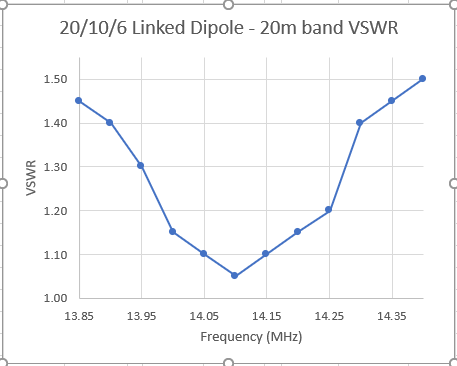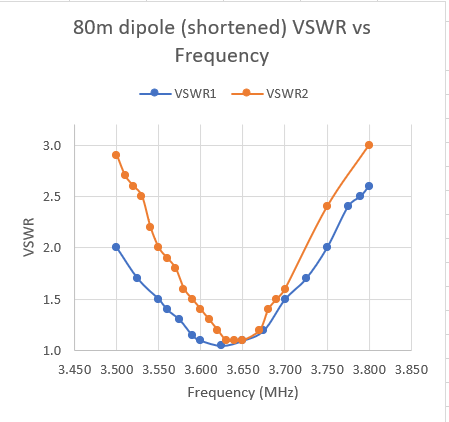yes I was thinking of the IC703 when I wrote 220 mA. I looked at the current on my KX3 today, it is a touch over 170mA on receive with no backlight. It stays at that level on headphones, but on speaker with volume up, the RX current increases to over 200 mA. Whatever the actual current is, it is very good as you say. my 4200 mAH LiFePO4 battery does 4 one-hour activations easily. (about 20 contacts on mixed ssb/cw for each activation).
Unfortunately the economy of scale only determines profit; prices are determined by market & competition. The more successful a radio is, the more it keeps its high launch price for longer. Manufacturers make these in batches and need to move them, if the first batch doesn’t move fast enough they will reduce the price to recover some of the initial investment quicker and that price can never be put back up.
Why is the IC-705 so thick? Must be a CRT display in there 
No internal ATU - what an omission. [Don’t say you use only resonant antennas - I use dipoles and they ain’t resonant at both ends of the band]
Still nothing yet to beat my KX2 for compact HF SOTA.
I welcome the 705 anyway - it can only help our hobby.
Mine is Andy (Only talking about 20m, 30m, 40m) well below 2:1 at band edges. I don’t tend to operate other HF bands these days (I did in the beginning including 160m) and I don’t have an ATU suitable for carrying up a summit. Funny shaped radio the IC-705 I wouldn’t how resilient it is to rain. Touch screen is a negative for operation in the condx we often encounter.
73 Phil
That in AUD or USD? I assumed AUD, but when I converted that to GBP to make a comparison with prices here I figured someone (HMRC?) over here is raking in a fair bit, because one store has listed it at GBP 1299.95 in the July RadCom, and at this moment’s exchange rate that works out somewhere around AUD 2350 or USD 1640…
Hi Phil,
I’ve made lightweight portable dipoles for most HF bands [using ultra-thin wire] and got good VSWR on 20m and higher [frequency bands]. 30m is so narrow, it’s not a problem.

80m SSB/CW needs an ATU especially for QRP power levels.

Less of a problem if you work only CW or only SSB.
You just need to make those dipoles a lot more lossy and the match will improve no end.
Two last posts right off topic.
My given price for the IC705 was the sale price here. The price in the UK is the RRP and is what is mentioned as the presale price here. And yes unless otherwise stated I quote AUD.
73
Ron
VK3AFW
Easiest place to tackle this is in the feeder. 10 year old RG174 that has suffered regular water ingress is particularly effective ![]()
With a badly fitted PL259 ?
To be serious your 80m SWR plot looks like my dipole. I cut mine so it’s centred around 3.6MHZ which means it’s OK for 3.560 CW QRP and the bottom of the allmodes and SSB sections. It may besub-optimal for whole band use but it’s for me activating so I simply pick frequencies that work for me.
I beg to differ. We’re discussing how the need (or not) for an external ATU makes the bulky IC-705 a less attractive solution compared to other rigs for small-volume backpack activations
Yeah, when I was trimming the length of the dipole it occurred to me that I was optimising it around frequencies that I don’t even use but necessary for low-ish VSWR at band ends. In any case, the KX2’s internal ATU easily gets 1:1.0 across the entire band.
[I can detect no insertion loss due to the internal ATU on any of my dipoles at their resonant frequency so usually leave the ATU switched in].
Thanks,
Good video. Makes the point it won’t suit everybody but no rig ever does. The KX3 according to some a bit fragile mechanically and VHF is an afterthought.
The KX2 is HF only but gee it’s a nifty size.
The FT817/8 has no ATU. It is very old technology now.
The IC705 has so many features that some of us can forgive the lack of a ATU.
The IC705 might be overkill for SOTA. My MTR3 has stood me in good stead, but it also needs an ATU and makes the KX2 look like bloatware size wise.
Horses for courses.
Don’t sneer at the other guy’s choice. He might think you are a nutter.
We all have different interests and wants.
Enjoy the diversity
73
Ron
VK3AFW
You clearly get better sales prices down under! I’d be pleasantly surprised if they dropped the price of it here by more than fifty quid in a sale. Of course, sometimes the adverts say “£phone” so you don’t know what price they’ll actually take until you call, and the vaguaries of exchange rates can knock prices every whichway (though more often up than down…). As a comparison, I think the lowest published price I’ve seen the IC-7300 for sale here was the launch price (1099.95 IRC?), and it didn’t stay there for long. Then it went up. Mind, there was a sharp drop in the value of the pound in June 2016 for some reason or other. . .
Except that it’s not really. The antenna is still mismatched to the transmission line. A network of inductors and capacitors in the radio can compensate for the reactive components of the load impedance presented to the radio and make it look like a resistive load that will keep the PA happy and able to operate at full power. You’ve still got standing waves on the transmission line and the SWR isn’t 1:1.
That’s not to say that the internal ATU isn’t useful - it is. But it isn’t magically fixing a high SWR on the transmission line between radio and antenna.
Martyn M1MAJ
Hi Martyn, I didn’t say or imply an ATU magically fixes anything (you make a strawman argument).
As you point out [and most of us know] an ATU tries - often successfully - to eliminate the reactive part of any impedance mismatch but that may still leave you with a resistive mismatch.
When the needle on my external power/s-meter is not even deflecting from the 1:1.0 mark [or it’s showing zero on the reflected power setting] I assume the resistive mismatch is very low.
My original points remain:-
- an ATU can improve the Tx-to-dipole match across the entire band which can make a significant performance difference for the QRP portable operator
- I would put an internal ATU much higher up the list of desirable features of a portable QRP rig than ‘bells and whistles’ like a touch screen.
regards, Andy
Sorry, I didn’t mean to imply that you had said that. I wasn’t thinking of this as an argument!
That is perfectly true, and often forgotten, but it wasn’t the point I was intending to make.
I agree that an internal ATU can be a very useful thing, enabling the transmitter to transfer full power to a load which does not present the ideal impedance.
My point, and I admit it’s a slightly pedantic one, is that it is not achieving a 1:1 SWR on the transmission line to the antenna. If the transmission line were lossless, a high SWR on it wouldn’t matter. But if you are concerned about the high SWR leading to feeder losses, an internal ATU won’t help with that.
There is a nominal 1:1 SWR on the connection between PA and ATU, but with an internal ATU that is so short compared with the wavelength that it could not support standing waves anyway!
Martyn
Hello Colin, I agree totally with your comments about this rig.
73 de Geoff vk3sq